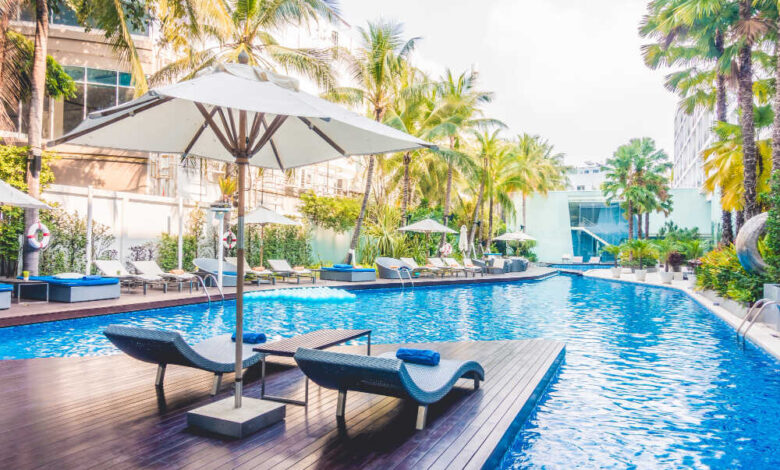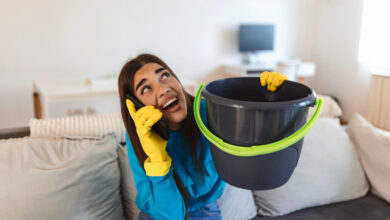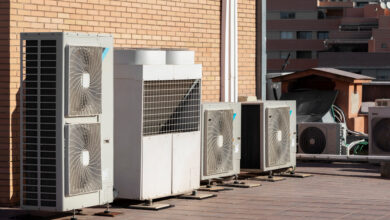Pool Chemicals 101: Understanding Hot Tub Bromine and Stabilized Chlorine Tablets

Maintaining a clean and healthy swimming pool or hot tub is a task that goes beyond regular skimming and vacuuming. For water to be clear and of high health standards, pool owners depend greatly on the right balance of chemical treatments, especially that of sanitizers.
In that regard, pool experts see the use of hot tub bromine and stabilized chlorine tablets, which play a key role in the prevention of bacteria, algae, and other contaminants, which can put a damper on your pool or spa experience.
For property owners and pool managers, these chemical choices pool owners have are of great health concern to have in and out of the pool, as well as for what they do for pool equipment longevity.
Why Pool Chemicals Matter
In the pool and in the spa water, pool owners see a great environment for microorganism growth if improper care is given. Warm water, in fact, is a goldmine for bacteria, fungi, and viruses. If left to grow out of control, these microorganisms will cause issues like cloudiness in the water, bad smells, and, in some cases, skin and eye irritation.
Chemical elements such as bromine and chlorine function as sanitizers, oxidizers, and disinfectants. They break up harmful contaminants, control algae growth, and protect swimmers from waterborne illness. What works best is to choose the right sanitizer, which is pool or hot tub specific, as each of these has unique requirements.
Hot Tub Bromine: Gentle but Powerful
In terms of hot tubs and spas, chlorine’s alternative is bromine, which is what pool operators prefer to use.
Benefits of Hot Tub Bromine
- Bromine is stable in hot water, which makes it a great solution for spas and hot tubs that see temperatures over 100°F (38°C).
- Bromine-based—in the pool, that is—it is gentle on your skin and eyes; pool owners see less of the irritants that chlorine produces, which in turn reduces red eyes, itchy skin, or that strong chemical smell.
- Bromine tablets, which have a slow-release action; thus, they continue to disinfect after having neutralized contaminants.
- Spent bromine may be reactivated by shock treatment, which in turn extends its utility and reduces the overall cost of chemicals.
How to Use Hot Tub Bromine
Bromine is put in the water via bromine tablets, which are placed in a floater or feeder. In terms of hot tubs, the recommended level is usually to have between 3 and 5 ppm (parts per million) of bromine. Also, it is best to use pool and spa test kits for regular testing, which will keep levels balanced.
Because of the smaller volume of water in hot tubs as opposed to swimming pools, chemical levels must be very carefully controlled. Also, pool experts see that bromine, which has a tendency to break down more slowly in warm water, makes it easier for pool operators to maintain a consistent water quality.
Stabilized Chlorine Tablets: A Pool Essential
For larger swimming pools, stabilized chlorine tablets are one of the most popular sanitation methods.
Benefits of Stabilized Chlorine Tablets
- Stabilized chlorine products have cyanuric acid, which in turn protects the chlorine from the sun’s UV action. In outdoor pools, which may be exposed to great solar exposure, this is a very useful feature.
- Convenient and Durable – These tablets dissolve at a slow rate to release chlorine, which in turn keeps water sanitized for long with minimal effort.
- Cost-efficient—These tablets have a greater duration, which in turn sees pool owners save money by cutting back on the frequency of chemical use.
- Versa, which fits any of the tablets into the chlorinator, floater, or skimmer basket as pool operators see fit.
How to Use Stabilized Chlorine Tablets
Chlorine levels in pools should be maintained at 1–3 ppm in general. The number of tablets required varies with pool size and conditions. For instance, a 10,000-gallon pool may use 2 to 4 tablets a week.
Regular pool maintenance is key, as the overuse of stabilized chlorine may cause high levels of cyanuric acid that in turn will decrease the chlorine’s performance. For best results do not forget to test water balance regularly to avoid the issue of chemical imbalance and at the same time get that perfect hygiene.
Choosing Between Bromine and Chlorine
Both hot tub sanitizers, like bromine and chlorine tablets, do it effectively; it is true that which one you use depends mostly on what kind of water system you have.
- Hot tubs and spas—it is the case that bromine is the better choice for its stability in high temperatures and gentle effect on the skin.
- Swimming pools—It is the stabilized chlorine tabs that do best in terms of cost and protection against UV as well as ease of use.
Some pool and spa owners may, in fact, put to use a mix of both.
Balancing Pool Chemistry Beyond Sanitizers
While pool experts see that bromine and chlorine are key players in pool chemistry, that is far from all. To run your pool water crystal clear and to protect your equipment, pool owners also should monitor:
- pH Levels (ideal range: between 7.2 and 7.6)—which is to say that it prevents scaling, corrosion, and swimmer discomfort.
- Total Alkalinity (80 to 120 ppm)—which stabilizes pH levels.
- Calcium Hardness (200–400 ppm)—which in turn protects pool surfaces and equipment from damage.
- Shock Treatments—At regular intervals, operators perform oxidation, which in turn removes organic contaminants and causes sanitizer to work more effectively.
Balanced out in these issues, pool experts present a seamless, safe swimming experience, which also reduces ongoing maintenance costs.
Environmental Considerations
Using proper measures in chemical application is key to this issue. Pool experts also see overapplication and improper disposal as issues. To reduce impact:
- Follow manufacturer guidelines for dosage.
- Store chemicals out of direct sunlight and moisture.
- Do not put chemically treated water into storm drains or natural water bodies.
Advances in pool care have brought forth better chemical formulations, which do less at the same time that they maintain pool health. Also, this has helped in reducing waste and environmental impact.
Conclusion
A perfect pool or spa is not a fluke—it is the result of using the proper chemicals properly. In high-temperature settings, such as those found in hot tubs, bromine is a highly effective and long-lasting choice for sanitation. Also for pools that are exposed to lots of sun, pool operators see that stabilized chlorine tablets are at once very reliable and very economical.
Through studying how these sanitizers function and balancing other aspects of pool chemistry, homeowners can enjoy safe, clear, and inviting water year-round. For people who are looking for reliable products and in need of more info on pool care resources, like Ocean Vista Pool, are available.




